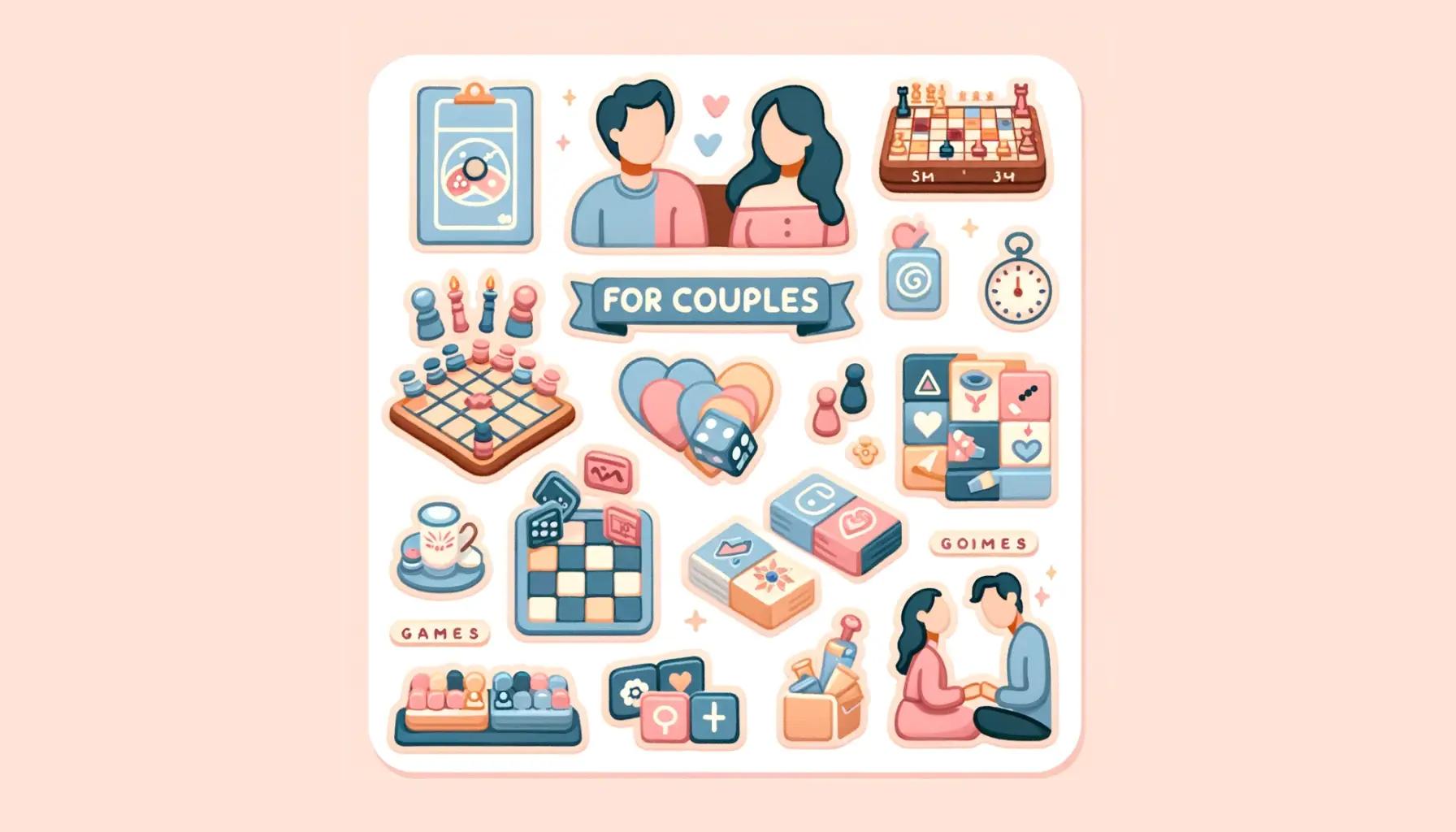Understanding Turn On and Offs Beyond Sexual Desire

When we talk about turn on and offs in a relationship, we immediately think of sexual stimuli. But this goes beyond sex and desire. Many turn on and offs are non-sexual in nature and affect your relationship more than you might imagine–both in a good and bad way.
Turn on and offs significantly shape the dynamics between you and your partner:
- Turn offs, even if minor at first, accumulate over time and eventually lead to falling out or even breakups.
- On the other hand, turn ons, when overlooked or unexplored, are missed opportunities to deepen intimacy and keep the relationship vibrant. This can also potentially lead to stagnation or a loss of interest.
In this article we’ll discuss:
- The difference between sexual and non-sexual turn ons and turn offs
- Their impact on relationships
- Strategies to improve communication and mutual understanding.
Non-Sexual vs. Sexual Turn On and Offs
Sexual turn on usually refers to traits that directly stimulate sexual attraction or desire, such as body shape, facial features, voice, or pheromones.
Non-sexual turn on refers to qualities that make you like, respect, or want to spend time with someone, without necessarily triggering sexual attraction. Examples include kindness, intelligence, hygiene, humor, and emotional warmth.
Attraction goes far beyond looks or sexual stimuli. It’s also shaped by emotional, behavioral, and personality cues.
For example, a study published on PubMed found that both genders associated romantic images more strongly with “pleasant” than sexual images. This challenges the stereotype that men only want sex and women only want romance, showing that both respond to romantic cues.
Common Turn Offs in Relationships
 Photo: Freepik
Photo: Freepik
Turn offs aren’t always big betrayals or disappointments like infidelity or violent behaviour; they often start with the small things.
Research shows that everyday stress can slowly build up and hurt how happy couples feel together. For example, a study found that couples who often deal with stressful habits in daily life tend to feel less satisfied in their relationships.
What is a Relationship Turn Off, Exactly?
A turn off is any behavior, habit, or trait in a partner that consistently reduces your attraction or emotional connection.
Fun fact: According to research, women tend to notice more dealbreakers in relationships than men. This doesn’t mean men are immune to turn offs, though! Both partners are affected in the long run.
Biggest Turn Offs in Relationships
Here’s a list of the most common turn offs for both women and men, in no particular order. Understanding these behaviors is part of recognizing the full range of turn on and offs in a relationship.
1. Flirting with Others
Even casual flirting can make someone feel uneasy or question the relationship’s stability. It’s not necessarily about jealousy, but about trust and respect.
2. Having Bad Hygiene
Beyond attraction, hygiene also reflects self-care habits. Neglecting it impacts both comfort and connection between the partners.
3. Bigotry
Negative or prejudiced attitudes toward people or groups often signal conflicting values, which creates tension over time.
4. Anger Issues
Losing temper often makes it hard for partners to communicate and creates a stressful environment in the relationship.
5. Bad Manners
Little habits like interrupting or ignoring social etiquettes – such as saying “thank you” and “you’re welcome” – signal a lack of consideration or respect for others.
6. Arrogance or Self-Centered Behavior
A partner who always focuses on themselves in conversations or decisions can make the relationship feel one-sided.
7. Talking About Exes Too Much
Hearing a partner talk about an ex too much gives the impression that they aren't fully over the past, causing comparison or insecurity.
8. Complaining Too Much
Venting occasionally is healthy, but constant negativity drains energy and affects the overall mood in the relationship.
9. Silent Treatment or Poor Communication
Avoiding discussions about feelings or conflicts usually leads to misunderstandings and falling out. Asking thoughtful questions to help your partner open up can make it easier to share feelings.
10. Talking Too Much
Good communication is essential, but dominating every conversation leaves a partner feeling unheard or undervalued.
11. Not Respecting Boundaries
Everyone has personal limits, and ignoring them causes discomfort or tension, even if it’s not intentional.
12. Lack of Self-Esteem
Low confidence makes someone overly dependent, hesitant, or insecure, which can affect both partners’ comfort in the relationship.
13. Clinginess
When a partner needs constant attention or reassurance, it becomes hard for both people to have their own space and maintain balance in the relationship.
14. Jealousy
Being suspicious or comparing a partner to others creates stress and makes the other person feel unsafe and distant.
15. Phone Addiction
When a partner spends too much time on their phone, the other person often feels ignored, and the connection between them starts to fade.
16. Not Taking Initiative
Relationships work best when both partners put in effort. If one rarely takes the lead, the other may end up carrying most of the responsibility.
How Do We Talk About Turn Offs?
Communication is the backbone of any relationship. Having honest conversations helps prevent small irritations from turning into bigger issues. One way to get started is by exploring deep conversations that go beyond surface-level talk and really reveal what matters to each of you.
Apps like Couple Joy makes communication a daily habit. With a variety of questions for couples, it’s easier to discover each other’s turn on and offs and strengthen the relationship over time.

Here are some guidelines to make these conversations more effective:
- Be clear and honest: Address issues sooner rather than letting frustrations pile up.
- Pick the right moment: Avoid discussing turn offs right after an argument, during stressful times at work, or when emotions are raw.
- Speak from yourself: Use “I” statements instead of “you” statements. For example: say “I feel uncomfortable in messy spaces” instead of “You are messy.”
- Listen openly: Pay attention to feedback from your partner about your own habits or behaviors.
- Seek compromise: Work together to find solutions that respect both partners’ needs.
Common Turn Ons in Relationships
 Photo: Freepik
Photo: Freepik
Every relationship has its turn on and offs, but while some behaviors push your buttons, others make you feel connected, appreciated, and happy.
What is a Relationship Turn On, Exactly?
A turn on is anything that draws you closer to someone. It can be something physical, like the way they smile or touch your hand, or something deeper, like the way they make you laugh or listen when you talk.
Biggest Turn Ons in Relationships
Here’s a list of the most common turn ons for both women and men, in no particular order.
1. Kindness
Showing care and appreciation strengthens trust and emotional connection. Small gestures, like helping out without being asked, often leave a lasting impression.
2. Feeling Understood
According to research, feeling truly understood by a partner matters more for relationship satisfaction than just knowing facts about them.
When a partner listens and connects with thoughts and feelings, it strengthens the bond and makes the relationship feel closer and more fulfilling.
3. Looking Put Together
Taking care of appearance shows self-respect and care for the relationship, which creates a positive impression.
4. Good Communication
Talking openly and listening to each other helps partners understand each other better, while sharing feelings and hearing each other without judgment keeps the relationship strong.
5. Humor
Humor is often seen as one of the most attractive traits a person can have. It’s a major turn-on, especially for women, who often find a good sense of humor more appealing than physical appearance.
6. Independence
Having hobbies, interests, and personal goals keeps both partners fulfilled and prevents the relationship from being overly dependent.
7. Openness to New Experiences
From trying new foods, activities, or fun games for couples, being open to experience new things helps couples grow together. This way, they have fun together and share new moments.
8. Small Gestures
Doing little things, like giving a surprise gift, going on an unplanned trip, or taking care of chores without being asked, makes a partner feel appreciated.
9. Good with Kids and Animals
Caring for children or pets shows patience and nurturing qualities. This is a turn on because it demonstrates that the person would be loving and dependable in all areas of life.
10. Optimism
A positive outlook helps partners handle challenges and enjoy life together. Optimism is a turn on because it brings energy and hope into the relationship.
11. Openness About Problems
Talking about problems together helps partners understand each other better and prevents small issues from turning into bigger conflicts. It builds trust and makes the relationship feel safer and closer.
12. Flirting
Playful teasing and showing affection keeps the connection fun and helps partners feel close and attracted to each other.
13. Clean Environment
Keeping shared spaces tidy, like the house or car, makes the home feel comfortable and shows care for the partner, which makes the relationship more enjoyable.
14. Emotional Intelligence
Listening carefully and taking responsibility for actions makes a partner feel understood and respected, which strengthens trust and attraction.
15. Supportiveness
Helping a partner through tough times, cheering them on, and being there when needed makes the partner feel cared for and safe.
16. Reliability
Doing what is promised and being consistent shows a partner can be counted on. This creates a sense of security and trust, making the relationship feel stable and safe.
How Do We Talk About Turn Ons?
Sharing what excites and attracts each partner is just as important as talking about turn offs. Open conversations about turn on and offs create more intimacy between partners and prevent missed opportunities to show care.
Here are some tips for making these conversations more effective:
- Be specific and clear: Don’t assume your partner knows what makes the relationship exciting or meaningful. Naming concrete actions or qualities makes it easier for both partners to understand.
- Focus on feelings: Use statements like “I feel loved when…” to show the effect of an action rather than just describing the action itself. People respond more when they understand the impact it has on emotions, not just the steps they should take.
- Make it fun: Conversations about turn ons don’t need to be serious or emotionally heavy. Play games like the 21 questions game or other couples’ question prompts to keep the process enjoyable.
- Take action Once you know each other’s turn ons, look for ways to incorporate them into daily life. Small gestures make a big difference.
Talking about Turn on and Offs Made Easy
Exploring turn on and turn offs is a chance to learn what truly makes each partner feel loved and appreciated.
With the Couple Joy app, these conversations become easy and natural, helping couples discover each other’s turn on and offs in a way that brings them closer and makes the relationship feel more alive!








